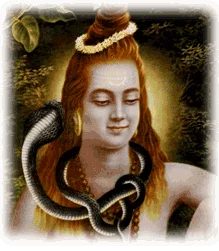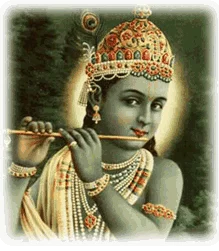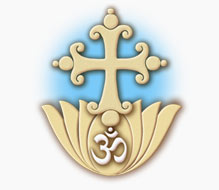
Religions have different names and concepts of God about which they argue, but if they came to know God then all argument would cease. Yogananda said: “If we could put the founders of the world religions into one room we would have paradise, but if we put their ‘followers’ together we have a war!” It is the difference between knowing God and only believing in God.
***
In the beginning, good deeds, good ideas, and religiosity are lights in our darkness. But they can only illuminate a bit of our spiritual environment. This may not be understood by us at first, but when the sun of spiritual experience arises in us, and the Self begins to shine and give light to our whole personal world, we will understand. Not that we will despise and consider our former lights as valueless, but we will have a right perspective on the matter and realize that if the sun had not risen we would still be fundamentally in the dark, or at least in the dim. The Gita tells us: “When the whole country is flooded, the reservoir becomes superfluous. So, to the illumined seer, the Vedas are all superfluous” (Bhagavad Gita 2:46) when the Self becomes active in our consciousness.
***
A great deal of religion just keeps us going round and round on the wheel of samsara. What we need is the spiritual outlook and practice that gets us out of maya and into the Absolute. A lot of people’s religion consists of holy toys that amuse and distract them but in no way free them from delusion and bondage, because they are themselves delusion and bondage. And that includes any philosophy that is just talk and no practical application.
***
Maya is delusion, whether gross or subtle, and we should have nothing to do with it or we will suffocate in its numberless manifestations, which can include religion. We should carefully study our religion and see what it is really doing to us, and get rid of it if it is not taking us to moksha. True religion is the path to liberation, whatever form it might take.
***
Unless their conscience is blunted by ignorance and frustration, the truly sincere followers of external, exoteric religion are inwardly tormented by the fact that their beliefs and their religious observances cannot purify or correct their minds and hearts. “What lack I yet?” (Matthew 19:20) is their cry, even if only secretly in their heart. Their religion will never give the needed answer, but they will find it in the vision of the Indian sages. Only by the light of the Self, only by entering into and experiencing the Self, will their impurities and the impulse to negativity be destroyed. For Krishna is speaking as the Self in each one of us when he says: “Free from greed, fear and anger, absorbed in me, holding fast to me, purified by knowledge-based tapasya, many have attained my state of being” (Bhagavad Gita 4:10). There is no other answer but experience of the Self.
***
If our goal is realization, then that which does not lead to realization is worthless, actually detrimental. All kinds of devotional and religious actions can be a tremendous block to genuine spiritual life. The only good action is that which reveals the Self to us.
***
A religion which does not teach the fundamental truths of karma, rebirth, and evolution of consciousness which results in the revelation of innate divinity and liberation is a soul-killing delusion, an enemy of God and man. To say that all religions teach the truth and lead to the same goal is irresponsible. Only those with the characteristics I have listed are teaching the truth and leading to the one Goal. They alone are dharma, the others are adharma.
***
In religion we have people that bully or cajole others into doing what they want them to do. They often do it to bolster their religion and keep people moving through the religious assembly line, and often they really are concerned about the person and truly are doing it “for their own good.” But it never works, and often creates hypocrisy and misery.
Regarding this, Sri Ramakrishna said: “You must remember that nothing can be achieved except in its proper time. Some persons must pass through many experiences and perform many worldly duties before they can turn their attention to God; so they have to wait a long time. If an abscess is lanced before it is soft, the result is not good; the surgeon makes the opening when it is soft and has come to a head. Once a child said to its mother: ‘Mother, I am going to sleep now. Please wake me up when I feel the call of nature.’ ‘My child,’ said the mother, ‘when it is time for that, you will wake up yourself. I shan’t have to wake you.’” And on another occasion: “I want you to remember this. You may impart thousands of instructions to people, but they will not bear fruit except in proper time.”
Dedication to God and the pursuit of higher consciousness can only occur when a person has an intense desire to end the mirage of this earthly life and ascend into the divine life.
***
This is the only true religion there is: the path of return to God. Everything else is a myth. It does not matter what formal religion a person professes, if he is not a yogi then he has no religion at all.
***
When Saint Paul was speaking to the philosophers on Mars Hill in Athens, he declared what God had ordained regarding all human beings: “That they should seek the Lord, if haply they might feel after him, and find him, though he be not far from every one of us: for in him we live, and move, and have our being; as certain also of your own poets have said, For we are also his offspring” (Acts 17:27-28). That is why Saint John the Apostle wrote: “Now are we the sons of God” (I John 3:2). It is our eternal being. Jesus spoke for all of us when he said: “I and my Father are one” (John 10:30).
So we should pay no attention to those religionists who would presume to say who is near or far in relation to God. Certainly the consciousness of some is near to God and the consciousness of some is far from God. But the essential being of both is the same, and it is the destiny of every one of us to take the journey to God, a journey that takes place in our consciousness. A person who today is a sinner may quickly become a saint when he turns around. And someone considered a saint may fall into delusion before the day is over.
The Gita says this: “They who worship me with devotion are in me, and I am also in them. If even an evildoer worships me single-heartedly, he should be considered righteous, for truly he has rightly resolved. Quickly he becomes a virtuous soul and goes to everlasting peace. Understand: no devotee of me is ever lost. Truly, those who take refuge in me even though they be from wicked origins, they also attain the Supreme Goal. Having come to this impermanent and unhappy world, devote yourself to me. With mind fixed on me, devoted, worshipping, bow down to me. Thus steadfast, with me as your supreme aim, you shall come to me” (9:29-34).
***
A friend once said to me: “The problem with nearly all religions is that they try to tell God what he can and cannot do.”
***
Some things have life inherent in them, and others do not. If we sow a seed in the earth it will grow and produce fruit containing other seeds, ensuring that life will continue in a perpetual cycle. But stones will not. The sadhaka must be careful to only sow life-bearing things in the field of his sadhana. The externals of religion may be impressive and even inspiring, but only the internals of religion give us life and increase that which we already have.
***
Shraddha, faith, is an intuitive knowing, not just an intellectual conviction. It arises from spiritual experience which is possible when the necessary degree of evolution is attained. Because of this, Max Heindel insists in The Rosicrucian Cosmo-Conception that the most negative state possible for the human being is unbelief, lack of faith.
***
Those who have faith in God continually think of God and make him the center of their life. The highest manifestation of faith is dedication to yoga sadhana. It is the yogi who has the highest and truest faith.
Next in Living the Yoga Life: Samadhi







